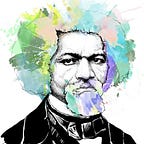Civil Rights in the South
The bulk of the civil rights movement itself took place in the Southern United States. Though Jim Crow laws had remained for nearly 100 years, Black Americans protested disenfranchisement at the start of the reconstruction era. The decades-long campaign would get most of its traction during the 1950s and 60s.
The civil rights movement is one of the most taught subjects in U.S.public schools. The results of which led to the end of segregation. By the mid-20th century, Black Americans had dealt with enough prejudice and oppression by their white counterparts, which led to organized protests showing solidarity. Late 1955, Rosa Parks became a catalyst for the movement that would follow when she refused to give up her seat on the bus to a white person, leading to her arrest for breaking segregation law. Sparking outrage from white people and gaining support from her Black peers, Parks became a notable figure in the modern-day civil rights movement. In response to her courageous actions, the 381-day Montgomery Bus Boycott began, in which Black citizens protested segregation by refusing to ride city busses. Making up a large majority of the people who used busses, the protesters took matters into their own hands by denying profits to the people who relied on their patronage. The effectiveness of the boycott underscores the importance of power in numbers.
Though Black people faced much resistance from white people, there are many success stories to be celebrated. In 1957, 3 years after segregation was made illegal in public schools, the Little Rock Nine attempted to integrate into the previously segregated school. The students encountered a volatile mob and the Arkansas National Guard that barred their entry. The nine students were eventually able to enroll despite the traumatic prejudice they faced. With the assistance of federal troops, they attended classes but faced constant racial ridicule from white classmates. In early 1960, four Black college students took a stand against segregation laws by performing a sit-in in which they refused to leave the “whites only” restaurant without being served. The sit-ins showed the country a form of peaceful protest that ended with the owners caving in and serving the Black customers after all.
The 1963 March on Washington remains one of the most widely known and photographed protests from the civil rights movement. Over 200,000 people of all races gathered in Washington to peacefully protest racism in the United States. Most notably, Martin Luther King Jr. orated his celebrated “I Have A Dream” speech during this protest.
In 1964, the Civil Rights Movement reached success when President Lyndon B. Johnson signed the Civil Rights Act, though the mistreatment did not end there. White people found ways in which they could continue to use the institutions in their favor.
The 1965 march from Selma to Montgomery, known as Bloody Sunday, showed the entire world the extreme police brutality that Black people faced in a post-segregation era. When attempting to cross the Edmund Pettus Bridge, the nonviolent protesters faced armed forces and the KKK, who used force to publicly deny them the right to a peaceful protest. The tragic assassinations of Malcolm X and Martin Luther King Jr. led to mass outrage, leading to further pressure on our administrations to implement further civil rights laws.
